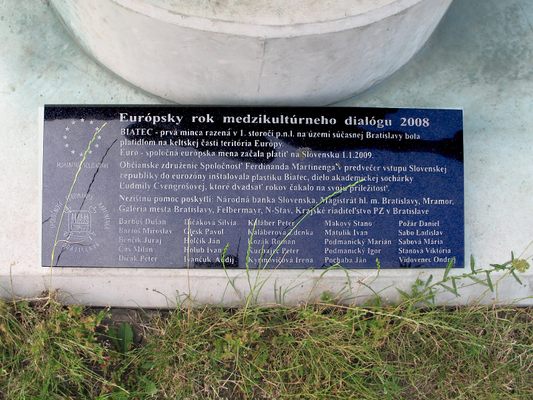About
It's unclear who Biatec was. The name appears on the coins that circulated among the Celtic tribe of the Boii, minted in what is present-day Bratislava around 60-40 B.C. These rare ancient coins are also referred to as Biatec (or Biatex) by modern scholars; while this has not been confirmed, it was likely the name of the leader of the tribe.
Generally sizing 25 millimeters (just under an inch) in diameter and weighing about 17 grams, the silver coins were equivalent of Hellenistic hexadrachms or tetradrachms, which they are believed to have imitated. Fourteen hoards consisting of these coins were unearthed in the 20th century, six of them in Bratislava.
The obverse usually showed a bust or two facing right, while the reverse was a horseman or an animal, both mythological and real, such as the griffin, lion and boar. Under the reverse figure was an inscription in capital Latin letters. There are 14 known types of inscriptions, but the one that appears the most frequently was BIATEC, sometimes shortened to BIAT.
Although rather obscure internationally, the Biatec coin has become a sort of icon in Slovakia. From 1993 to 2008, its design was featured on the five-Slovak koruna coin, and even today, the horseman can be seen on the National Bank of Slovakia's logo.
In 1988, a bronze monument shaped after and commemorating the Biatec coin was created by sculptor Ľudmila Cvengrošová. More than a hundred times larger than its real-life counterpart, the monument was 3 meters (10 feet) in diameter and weighed 3 tons. It was relocated in front of the National Bank of Slovakia in 2008, one month before the country's transition from the Slovak koruna to euro.
Related Tags
Community Contributors
Added By
Published
May 22, 2020














































